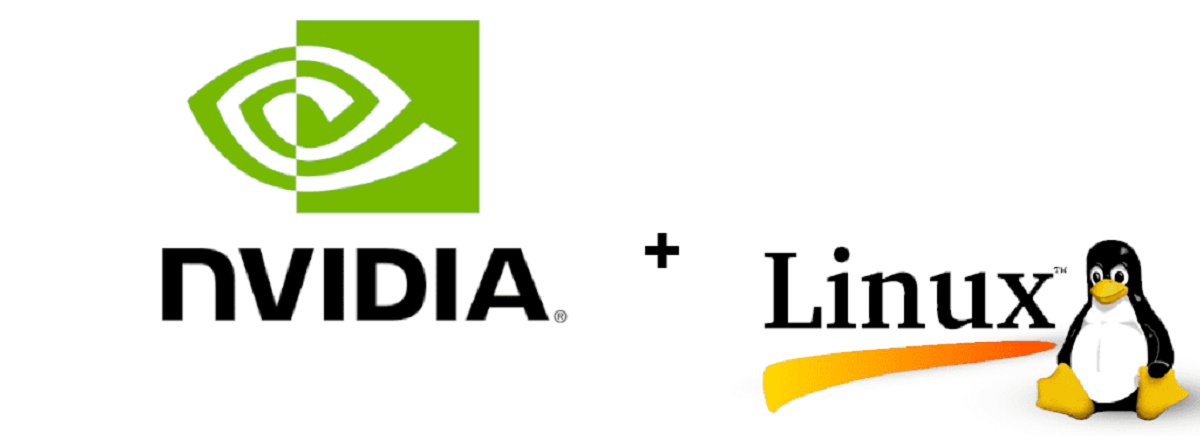
New Nvidia drivers provide vast improvements and higher performance over the open nouveau driver.
NVIDIA has released the new version of its NVIDIA drivers 550.54.14, This being the seventh stable branch released after NVIDIA will make the decision to release the components that run at the kernel level.
This new version of NVIDIA drivers 550.54.14 present a series of significant fixes and improvements which address various issues and optimize the user experience, and also include additional improvements to system stability, support for specific hardware, and overall system performance optimization.

What's new in NVIDIA 550.54.14?
NVIDIA 550.54.14 implements several improvements and fixes, of which the following stand out:
- Support for Vulkan extensions: VK_KHR_video_encode_queue, VK_KHR_video_encode_h264, VK_KHR_video_encode_h265 and VK_KHR_video_maintenance1.
- Application profile for Kwin to improve composite manager performance on hybrid graphics systems. This profile is enabled by the OGL_DEDICATED_HW_STATE_PER_CONTEXT=ENABLE_ROBUST environment variable.
- INSTALL_MOD_DIR environment variable, the content of the variable has been included in the kernel module creation process.
- Improved frame rate throttling when starting the X controller in headless mode. For X11 systems, a setting called “LimitFrameRateWhenHeadless” has been added, which allows you to disable the FPS limitation when working without a screen.
- Open kernel modules provide support for GeForce and Workstation series GPUs.
- Added experimental support for the RTD3 (Runtime D3) dynamic power management mechanism on PC GPUs.
- Experimental support for HDMI 10 bits per color channel, enabled via the “hdmi_deepcolor=1” parameter when loading the nvidia-modeset module.
- Support for passing HDR information through the DRM property HDR_OUTPUT_METADATA when loading the nvidia-drm module with the “modeset=1” parameter.
- Added an application profile to improve Kwin performance on hybrid GPU systems.
- Updated the build process for NVIDIA kernel modules to respect the INSTALL_MOD_DIR Kbuild environment variable.
- Fixed an issue that caused Wayland applications to run at less than one frame per second on Maxwell, Volta, and Pascal series GPUs. Also addressed a bug that caused an intermittent drop in desktop frame rate.
- Added experimental support in nvidia-drm for framebuffer-based consoles that can be used on Linux. Support is enabled when the module is loaded with the parameters “modeset=1” and “fbdev=1”.
- nvidia-installer can now install a new driver if the system already has an NVIDIA driver loaded.
- Added support for virtual reality headsets, such as SteamVR, on composite servers based on the Wayland protocol that support “DRM lease” mode. Wayland-protocols versions 1.22+ and xwayland 22.1.0+ are required for operation. This feature has been tested with Kwin 5.24 and Sway 1.7 composite servers.
- Fixed intermittent Xid errors in games such as Horizon Zero Dawn, Metro Exodus, Forza Horizon 5, and Halo Infinite.
Finally, if you are interested in learning more about the release of this new version of the drivers, you can consult the details In the following link.
How to install drivers in Linux?
Note: before carrying out any process it is important that you check the compatibility of this new driver with the configuration of your equipment (system, kernel, linux-headers, Xorg version).
Since if not, you can end up with a black screen and at no time we are responsible for it since it is your decision to do it or not.
For those of you interested in being able to install the Nvidia drivers on your system, the first thing to do is is to go to the official Nvidia website and in its download section they will be able to find the new version of the drivers ready for download.
Once the download is done, it is important that we remember where the file was downloaded, since we will have to stop the graphical user session to install the driver in the system.
To stop the graphical session of the system, for this we must type one of the following commands depending on the manager that we are using and we must execute the following key combination, Ctrl + Alt + F1-F4.
Here we will be asked for our system login credentials, we log in and execute:
LightDM
sudo service lightdm stop
o
sudo /etc/init.d/lightdm stop
GDM
sudo service gdm stop
o
sudo /etc/init.d/gdm stop
MDM
sudo service mdm stop
o
udo /etc/init.d/kdm stop
KDM
sudo service kdm stop
o
sudo /etc/init.d/mdm stop
Now we must position ourselves in the folder where the file was downloaded and We give execution permissions with:
sudo chmod + x nvidia * .run
Y finally we must run the installer with:
sudo sh nvidia-linux * .run
At the end of the installation we must re-enable the session with:
LightDM
sudo service lightdm start
o
sudo /etc/init.d/lightdm start
GDM
sudo service gdm start
o
sudo /etc/init.d/gdm start
MDM
sudo service mdm start
o
sudo /etc/init.d/kdm start
KDM
sudo service kdm start
o
sudo /etc/init.d/mdm start
You can also choose to restart the computer so that the new changes and the driver are loaded and executed at system startup.